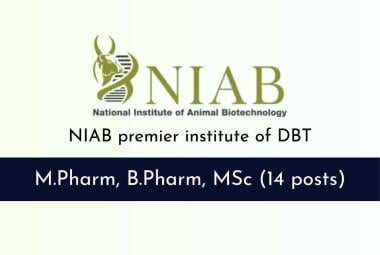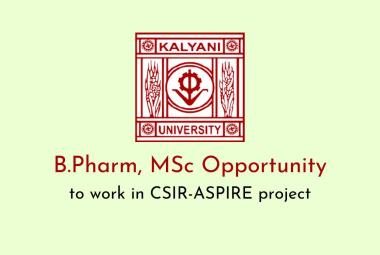{ DOWNLOAD AS PDF }
 ABOUT AUTHORS
ABOUT AUTHORS
Grishma Trivedi*, Hasumati Raj
Shree Dhanvantary Pharmacy College,
Kim, Gujarat
*trivedigrishma18@gmail.com
ABSTRACT
Pravastatin is an inhibitor of HMG-CoA reductase inhibitor which is used as a hypolipidemic agent to reduce cholesterol level. Chemically, 9-Fluoro-11β,17-dihydroxy-16α-methyl-3,20-dioxopregna-1,4-dien-21-yl disodium phosphate. Pravastatin is a drug of choice for the cardiovascular disease. It reduces the coronary and cerebrovascular morbidity and mortality in middle aged individual. Elevated plasma concentration of C-reactive protein are associated with protein increased cardiovascular disease, long term therapy with pravastatin an agent that reduces cardiovascular risk, might alter levels of this inflammatory parameter. This review consist of various analytical methods for the determination of pravastatin in various marketed pharmaceutical formulation of biological fluid. Analytical methods consist of various chromatographic methods, spectrophotometer methods and electrical methods reported for determination of pravastatin.
[adsense:336x280:8701650588]
REFERENCE ID: PHARMATUTOR-ART-2277
|
PharmaTutor (ISSN: 2347 - 7881) Volume 2, Issue 11 How to cite this article: G Trivedi, R Hasumati; A Review of Analytical Methods for Determination of Pravastatin in Pharmaceutical Dosage Forms and Biological Fluids; PharmaTutor; 2014; 2(11); 59-65 |
INTRODUCTION(1,2):
STRUCTURAL FORMULA:

Figure No.1: structure of pravastatin
MOLECULAR FORMULA: C23H35NaO7
MOLECULAR WEIGHT: 446.5gm/mol
CHEMICAL NAME: 9-Fluoro-11β,17-dihydroxy-16α-methyl-3,20-dioxopregna-1,4-dien-21-yl disodium phosphate
CATEGORY:HMG Co-A reductase inhibitor, lipid regulating drug, anticholesteremic agent
DOSE: 40mg daily
DESCRIPTION: White to yellowish–white powder or crystalline powder, hygroscopic
SOLUBILITY: Freely soluble in water and in methanol, soluble in anhydrous ethanol
PHARMACOLOGICAL ACTION(2):
Pravastatin is structurally similar to the HMG, a substituent of the endogenous substrate of HMG-CoA reductase. Unlike its parent compound, mevastatin, and statins such as lovastatin and simvastatin, pravastatin does not need to be activated in vivo. Its hydrolyzed lactone ring mimics the tetrahedral intermediate produced by the reductase allowing the agent to bind with a much greater affinity than its natural substrate. The bicyclic portion of pravastatin binds to the coenzyme A portion of the active site. Pravastatin sodium produces its lipid-lowering effect in two ways. First, as a consequence of its reversible inhibition of HMG-CoA reductase activity, it effects modest reductions in intracellular pools of cholesterol. This results in an increase in the number of LDL-receptors on cell surfaces and enhanced receptor-mediated catabolism and clearance of circulating LDL. Second, pravastatin inhibits LDL production by inhibiting hepatic synthesis of VLDL, the LDL precursor.
[adsense:468x15:2204050025]
PHARMACOKINETIC ACTION(2):
Pravastatin is rapidly absorbed with peak plasma levels of the parent compound achieved 1 to 1.5 hours after administration. The average oral absorption of pravastatin is 34% and absolute bioavailability is 17%. These values however, are variable. Food decreases the systemic bioavailability but the lipid-lowering effect is not impacted. It is metabolise by liver and it excretion by urine(20%) and feces(70%).
SIDE EFFECT(3):
Difficulty with moving, muscle or bone pain, muscle stiffness, chest pain or discomf, chills, cough, dark-colored urine, diarrhea, difficult or labored breathing, fever, headache, loss of appetite, muscle cramps or spasms, muscular tenderness, wasting, or weakness, nasal congestion, nausea, runny nose, shivering, sneezing, sore throat, sweating, swollen joints, tightness in the chest, trouble with sleeping, unusual tiredness or weakness, vomiting
ANALYTICAL METHODS:
This all are the methods which are used for the determination of Pravastatin in marketed formulation and in biological fluids. This all analytical methods are reported which are seen during the literature survey. This article describes the review on the all reported analytical methods with specific conditions.
I. COMPENDIAL METHODS:
Table No.1:Summary of official compendial methods
|
Drug |
Compendia |
Column |
Mobile phase |
Flow rate |
Wavelength |
|
Pravastatin |
Indian pharmacopoeia 2010(4) |
15cmx4.6mm |
glacial acetic acid: triethylamine: methanol: water (1:1:450:550v/v/v/v) |
1.3ml/min |
238nm |
|
|
Europian pharmacopoeia(5) |
0.15cmx4.6mm |
glacial acetic acid: triethylamne: methanol: water(1:1:450:550v/v/v/v) |
1.3ml/min |
238nm |
II. UV SPECTROSCOPIC METHOD:
A simple, precise and economical spectrophotometric method for the estimation of Pravastatin in pharmaceutical bulk and tablet dosage form was developed and validated. Identification was carried out using a UV- visible double beams pectrophotometer detector with working waveleng that 240nm in water and methanol medium. The method was validated with respect to its specificity, linearity range, accuracy, and precisionin analytical media. Pravastatin show the maximum absorbance(λmax) at240nm. Simple UV spectroscopy, first derivative spectroscopy, AUC method and absorption ratio methods are reported for determination of the Pravastatin in marketed formulation. Below in table describes the various chromatographic methods with the method description and condition which are reported on review literature.
Table No.2: Summary of UV spectroscopic methods of Pravastatin
|
Title |
Method |
Solvent |
λmax (nm) |
R2 |
|
Development of spectrophotometric method for pravastatin sodium in bulk and tablet formulation(6) |
Simpeuv-spectroscopy |
Distilled water |
240nm |
0.9999 |
|
Development of new analytical methods and their validation for the determination of pravastatin sodium in bulk and marketed formulation(7) |
Indirect method |
Distilled water |
440nm |
0.9986 |
|
Oxidation coupling |
Distilled water |
627nm |
0.9991 |
|
|
Simultaneous UV-spectrophotometric estimation of pravastatin and co-enzyme Q10 in their formulated combined dosage form and synthetic mixture(8) |
First order derivative |
Methanol:IPA(50:50V/V)(PRAVA) |
236nm |
0.999 |
|
Isopropyl:alcohol(50:50V/V)(Q10)
|
288nm |
0.999 |
III. CHROMATOGRAPHIC METHODS:
Various chromatographic methods are used for the determination of the Pravastatin alone or combination with other drugs in various marketed formulation and in biological fluids like human plasma and urine. Chromatographic methods like High performance liquid chromatography (HPLC/RP-HPLC), High performance thin layer chromatography (HPTLC) with UV detection are used. In which the stationary phase commonly used is C18 column and commonly used wavelength for detection is 240nm. Mobile phase is varies with condition of method in various proportion. Below in table describes the summary of the various chromatographic methods are used with the method description.
NOW YOU CAN ALSO PUBLISH YOUR ARTICLE ONLINE.
SUBMIT YOUR ARTICLE/PROJECT AT editor-in-chief@pharmatutor.org
Subscribe to Pharmatutor Alerts by Email
FIND OUT MORE ARTICLES AT OUR DATABASE
Table No.3: Summary of Chromatographic Methods of Pravastatin
|
Title |
Method |
Mobile phase |
Stationary phase |
Wavelength |
|
Development, optimization and validation of HPLC method for determination of pravastatin sodium in tablet(9) |
HPLC |
methanol : water : triethylamine : glacial acetic acid in the ratio of 455: 545: 2: 1.2 v/v/v/v |
Reverse phase C18
|
238nm
|
|
Reverse phase HPLC method for determination of pravastatin in tablet dosage forms(10) |
RP-HPLC |
Acetonitrile : potassium dihydrogen orthophosphate(0.02M)(30:70v/v)
|
Phenomenexluna 5µm C18(150x4.6mm)
|
240nm
|
|
High-performance liquid chromatography determination of pravastatin in plasma(11) |
HPLC |
Methanol: water(50:30) |
Isocratic c18 |
240nm |
|
Development and validation of analytical method for pravastatin(12) |
HPLC |
acetonitrile:methanol: 0.08M orthophosphoric acid (23:20:57v/v/v)
|
hypersil ODS,3µm,10cmx4.6mm
|
234nm
|
|
Development of a selective LC method for the determination of pravastatin sodium(13) |
LC |
Methanol:Phosphate buffer (pH 7; 0.02 M) (57:43, v/v)
|
C18(150 mm × 4.6 mm) |
238nm |
|
Method development and validation of pravastatin sodium in human plasma by using LCMS/MS(14) |
LC/MS/MS |
(80:20, v/v), acetonitrile and 2 mm ammonium formate
|
Hupurity advance C8, 50 x 4.6 mm, 5µm
|
236nm |
|
Quantitative determination of pravastatin in pharmaceutical dosage form by HPLC with UV detection(15) |
HPLC with UV detection |
10mM ammonium acetate: methanol: triethylamine (40:60:0.17 v/v/v)
|
Teknokroma C8(5µm,25cmx4.6mm) |
239nm |
|
Stability study of pravastatin under hydrolytic condition assessed by HPLC(16) |
Stability by HPLC |
acetonitrile-30 mmol L-1 : phosphate buffer solution pH 2 (28:72V/V) |
C18 column |
239nm |
|
Determination of pravastatin sodium and its isomeric metabolite in human urine by HPLC with UV detection(17) |
HPLC with UV detection |
Acetonitrile: methanol: water(40:50:10) |
C18 |
240nm |
|
Stability indicating RP-HPLC with UV detection for estimation of ezetimibe and pravastatin(18) |
HPLC with UV detection |
Acetonitrile: 0.1 % Formic acid: Methanol (40:50:10v/v/v)
|
C18
|
248nm |
|
RP-HPLC determination of three anti-hyperlipidemic drug in spiked human plasma and in dosage form(19) |
RP-HPLC |
Acetonitrile:50 mM KH2PO4 (40:60 v/v) |
150 mmx4.6 mm Zorbax Extend-C18 column |
230nm |
|
Development and validation of a simple and fast HPLC method for determination of lovastatin, pravastatin and simvastatin(20) |
HPLC |
Acetonitrile and 0.1%phosphoric acid(65:35v/v) |
C8encapped(250x4mmx5µm), isocratic
|
238nm |
|
An ultra sensitive and selective LC-UV method for the simultaneous determination of pravastatin, diltiazem. Naproxen sodium and meloxicam in API pharmaceutical formulation and human serum(21) |
LC-UV |
Methanol:water (80:20 v/v) |
Purospher Star, C18 (5 µm, 25 x 0.46 cm) |
220nm |
|
Determination of simvastatin, pravastatin sodium and rosuvastatin calcium in tablet dosage form by HPTLC(22) |
HPTLC |
Chloroform :methanol :toluene (6:2:2, v/v/v)
|
Precoated silica gel 60F 254
|
236nm |
|
The application of microbore UPLC/oa-TOF-MS and 1H NMR spectroscopy to the metabonomic analysis of rat urine following the intravenous administration of pravastatin(23) |
UPLC/oa-TOF-MS and 1H NMR |
Methanol: acetonitrile: water(50:40:30v/v/v) |
1mm i.d. x 100 mm column |
240nm |
IV. MISCELLANOUS METHODS:
Most widely used methods are mainly HPLC, UV and HPTLC for determination of Pravastatin in various formulation or in biological fluids but along with that other methods are also used which are seen during the literature survey. The summary of that methods are described below in table.
Table No.4: Summary of Miscellaneous methods of Pravastatin
|
Sr no |
Title |
Method |
|
1 |
Identification of an impurity in pravastatin by application of collison-activated decomposition mass spectra(24) |
Identification of impurity |
|
2 |
Capillary electrophoresis determination of pravastatin and separation of its degradation product(25) |
Capillary electrophoresis |
|
3 |
Kinetic spectrophotometric determination of pravastatin in drug formulation via derivatization with 4-chloro-7-nitrobenzo-2-oxa-1,3-diazole(NBD-CI)(26) |
Kinetic spectroscopy |
CONCLUSION
The presented review highlights on various analytical methods reported on Pravastatin and in combination with other drug. HPLC-HPTLC-UV methods were found to be most widely used. Various chromatographic conditions are presented in under Table. The faster time, high sensitivity; specificity and better separation efficiency enable HPLC to be used frequently for the determination of Pravastatin in the comparison with the other methods. There is no doubt on the fact that these chromatographic methods are rapid and far more economical. Other methods are also useful. In this way various analytical methods for the estimation of Pravastatin in bulk or in various matrixes like plasma, alone or in combination with other drugs is discussed. The presented information is useful for the researchers especially those involved in the formulation development and quality control of Pravastatin in combination with other drug.
REFERENCES
1. Tripathi KD, Essentials of Medical Pharmacology, 6thEdn, Jaypee Brothers Medical Publishers (P) Ltd, 2008, 614-615.
2. Pravastatin Drug Info.(database available on internet): drugbank.ca /pravastatinsodium/DB00175.
3. Pravastatin Drug Info.(database available on internet): drugs.com/
4. Indian Pharmacopoeia, Govt. ofIndia Ministry of Health and Family Welfare, 6th Edn, The Indian Pharmacopoeia Commission Ghaziabad, 2010, vol-III, 1945-1946, 2286-2287.
5. The European Pharmacopoeia, 7thEdn, published by the European Directorate for the Quality of Medicines & Health Care, 2011, pp 2292-2293.
6. Balaji.S., SumanKatteboina, “Development of spectrophotometric method for determination of pravastatin sodium in bulk and tablet formulation.” International Journal ofPharmTech Research, Oct-dec 2009, 1(4), 1017-1019.
7. Clara Esteves, E V S Subrahmanyam, A R Shabaraya, "Development of new analytical methods and their validation for the determination of pravastatin sodium in bulk and marketed formulation. "Inventi Rapid: Pharm Analysis & Quality Assurance, Vol. 2014.
8. HirenKadikar,” Simultaneous UV-spectrophotometric estimation of pravastatin and co-enzyme Q10 in their formulated combined dosage form and synthetic mixture.” International journal of pharmaceutical research and bio-science, 2012, 1(4),112-127.
9. VaniaMaslarska,” Development, optimization and validation of HPLC method for determination of pravastatin sodium in tablet.” International journal of advances in pharmacy, biology and chemistry. 230-234.
10. Delhi Raj N et al, ” Reverse phase HPLC method for determination of pravastatin in tablet dosage forms.” Int. J. Res. Pharm. Sci,2010, 1(2), 187-189.
11. Iacona I, Regazzi MB, Buggia I, Villani P, Fiorito V, Molinaro M, Guarnone E, ”High-performance liquid chromatography determination of pravastatin in plasma.” Ther Drug Monit, 1994 Apr;16(2),191-195.
12. Jacob jane, janivishal M.,”Development and validation of analytical method for pravastatin.” Research Journal of Pharmacy and Technology, 2013, 6(10), 1116-1120.
13. A. Önal, O. Sagirli, “Development of a selective LC method for the determination of pravastatin sodium.” Springer link, 64(3,4), 1-6.
14. KumudSampath, Ramesh N, Suresh Kumar, Sasijith SL and James D Terish, “Method development and validation of pravastatin sodium in human plasma by using LCMS/MS” journal of bio equivalence & bio availability,2011.
15. SafwanAshour, HusniNakshbandi, Soulafa Omar, “Quantitative determination of pravastatin in pharmaceutical dosage form by HPLC with UV detection.” International journal of biomed science,Jun 2008, 4(2), 135–139.
16. S. Brain-Isasi, C. Requena, A. Álvarez-Lueje, “Stability study of pravastatin under hydrolytic condition assessed by HPLC” journal of Chilean chemical society, 2008, 1684-1688.
17. Daisy b .Whigan. Eugene ivashki and Allen i. Cohen, “Determination of pravastatin sodium and its isomeric metabolite in human urine by HPLC with UV detection.” Journal of Pharmaceutical & Biomedical Analysis, 7(7), 907-912.
18. Hasumati A Raj, S J Rajput, Jainish A Jivawala, Vipul Y Rathod, "stability indicating reverse phase high performance liquid chromatography with uv detection for estimation of ezetimibe and pravastatin." Inventi Rapid: Pharm Analysis & Quality Assurance, Vol. 2013.
19. Ola. M. Abdallah, “RP-HPLC determination of three anti-hyperlipidemicdrug in spiked human plasma and in dosage form.” E-Journal of Chemistry, 2011, 8(2), 753-761.
20. Taízia D. Silva, Marcelo A. Oliveira, Renata B. de Oliveira, Cristina D. Vianna-Soares, “Development and validation of a simple and fast HPLC method for determination of lovastatin, pravastatin and simvastatin.” Journal of Chromatographic Science, 50(9), 831-838.
21. Najma Sultana, Muhammad SaeedArayne, Saeeda Nadir Ali, “An ultra sensitive and selective LC-UV method for the simultaneous determination of pravastatin, diltiazem. Naproxen sodium and meloxicam in API pharmaceutical formulation and human serum.” American Journal of Applied Chemistry, 2013,1(1), 1-8.
22. Chaudhari B, Patel N, Shah P, “Determination of simvastatin, pravastatin sodium and rosuvastatin calcium in tablet dosage form by HPTLC.” Indian Journal of Pharmaceutical Sciences 2007.
23. Lenz EM, Williams RE, Sidaway J, Smith BW, Plumb RS, Johnson KA, Rainville P, Shockcor J, Stumpf CL, Granger JH, Wilson ID, “The application of microbore UPLC/oa-TOF-MS and 1H NMR spectroscopy to the metabonomic analysis of rat urine following the intravenous administration of pravastatin.” J Pharm Biomed Anal, 2007 Aug, 44(4),845-852.
24. Andrej Kocijana, RokGraheka, LucijaZupan?i?-Kraljb. “Identification of an impurity in pravastatin by application of collison-activated decomposition mass spectra.” ActaChim. Slov, 2006, 53, 464–468.
25. BiljanaNigovi, IvanaVegar, “Capillary electrophoresis determination of pravastatin and separation of its degradation product.” CROATICA CHEMICA ACTA CCACAA, 2008, 81(4), 615-622.
26. SafwanAshour, MouhammedKhateeb, “Kinetic spectrophotometric determination of pravastatin in drug formulation via derivatization with 4-chloro-7-nitrobenzo-2-oxa-1,3-diazole(NBD-CI).” Arabian Journal of Chemistry, july 2011, 4(3), 299-305.
NOW YOU CAN ALSO PUBLISH YOUR ARTICLE ONLINE.
SUBMIT YOUR ARTICLE/PROJECT AT editor-in-chief@pharmatutor.org
Subscribe to Pharmatutor Alerts by Email
FIND OUT MORE ARTICLES AT OUR DATABASE









